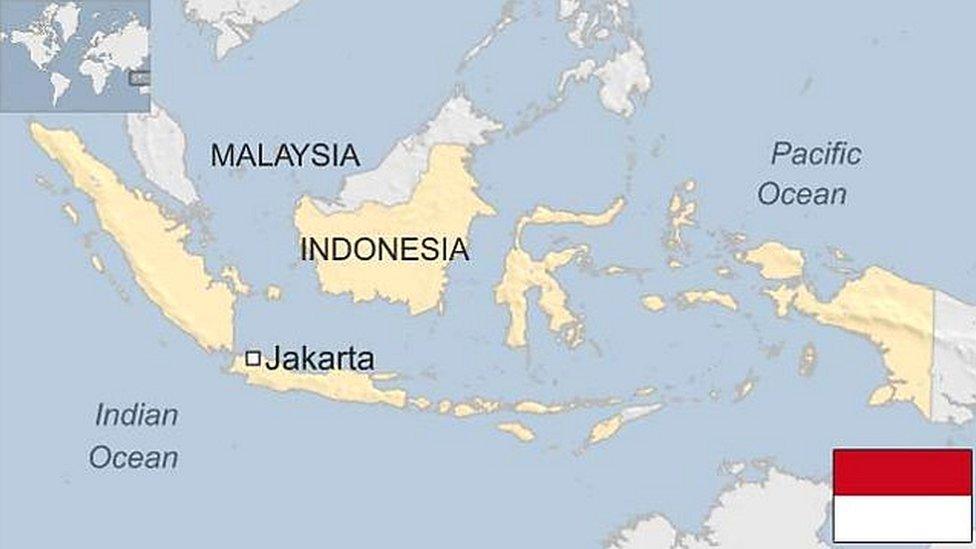Bali volcano: Indonesia fears imminent Mt Agung eruption
- Published
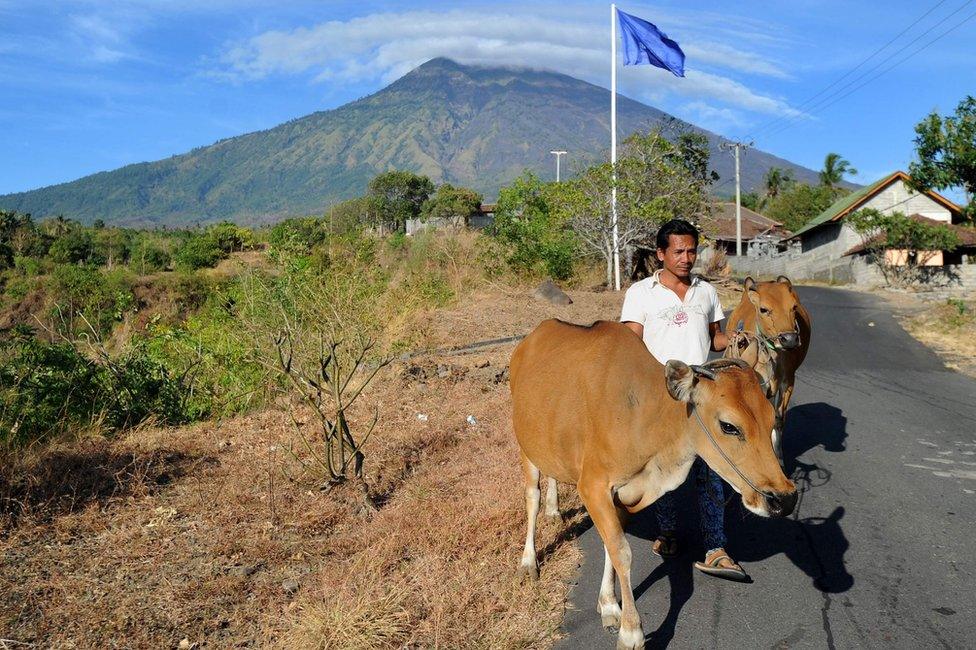
Farmers living in the shadow of Agung have been moving their cattle off their land
Indonesia has warned that the active volcano on the tourist island of Bali is entering a "critical phase", amid fears of an imminent eruption.
Hundreds of tremors were recorded on Monday at Mount Agung, in an increase of volcanic activity.
But officials also stressed they could not predict when it might erupt.
More than 75,000 people living near the mountain have been evacuated from their homes, and the area is under the highest level volcano alert.
Is Bali volcano about to erupt?
Indonesia's national disaster agency spokesman Sutopo Purwo Nugroho told reporters on Monday that "volcanic activity is increasing, and tremors are being becoming more frequent".
He added: "There is a definite possibility that it will erupt, however we don't know when it will happen."
More than 560 volcanic tremors were detected on Monday alone, according to the national volcanology centre.
Officials started detecting shallow tremors in late August. Within days the volcano showed increasing signs of activity, and authorities stepped up their alerts and evacuations of the rural villages surrounding the mountain.
Thousands are now living in temporary shelters at town halls and schools after authorities imposed a 12km (7.5-mile) exclusion zone around the mountain.

'Feverish offerings'
Rebecca Henschke, Editor, BBC Indonesian
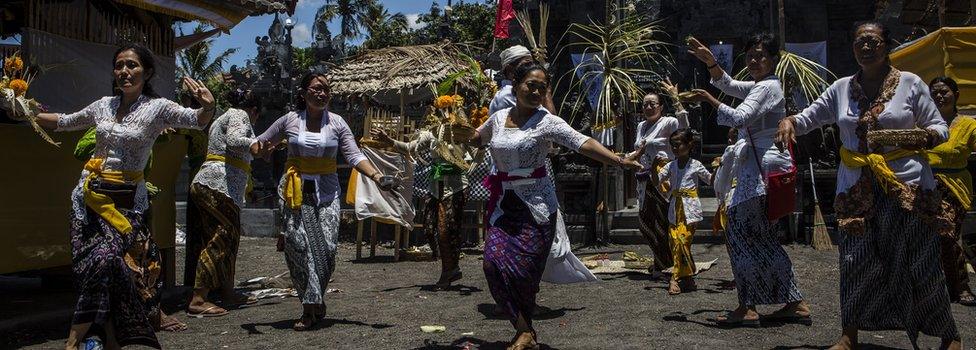
Hindu worshippers performed a ritual ceremony inside the danger zone on Monday
When Mount Agung rumbles, the Balinese believe the gods are angry. Everything on the island exists in relation to the giant volcano.
Some religious leaders say tourists behaving badly and disrespecting customs are to blame for its current activity.
Now, in temples across Bali, feverish offerings are being made. And in some villages inside the danger zone, people are waiting for spiritual signs from priests and those believed to able to communicate with the volcano, before coming down.
The government is telling them to leave now. The last time Agung erupted in 1963, people had just minutes to flee.
Concern for livestock is stopping some people from leaving this time. And there are farmers who are returning daily to the danger zone so they can feed animals they can't take with them.
A local animal rights group is trying to help, evacuating animals left behind or releasing them so they can at least run.

The national disaster agency said in a statement on Tuesday (in Bahasa) , externalthat 75,673 people had now moved out of their homes in the danger zone. Some had arrived in "sister villages", external, neighbouring villages prepared to receive evacuees.
It added that volunteers were helping to evacuate cattle from the danger zone.

A sports arena in Klungklung at Bali has been converted into a temporary shelter
The main tourist areas of Kuta and Seminyak, which are about 70km from the mountain, remain unaffected for now. Flight operations are also normal.
But several countries including Britain, external, Australia, external and Singapore, external have issued travel advisories for their citizens, warning of possible flight disruption and evacuations.
More than 1,000 people died when Mount Agung last erupted in 1963.
Mount Agung is among about 130 active volcanoes in Indonesia - an archipelago prone to volcanic eruptions and earthquakes as it sits on the Pacific "Ring of Fire".


Are you in the affected area? Get in touch by emailing haveyoursay@bbc.co.uk, external.
Please include a contact number if you are willing to speak to a BBC journalist. You can also contact us in the following ways:
WhatsApp: +44 7555 173285
Send pictures/video to yourpics@bbc.co.uk, external
Tweet: @BBC_HaveYourSay, external
Text an SMS or MMS to 61124
- Published25 September 2017
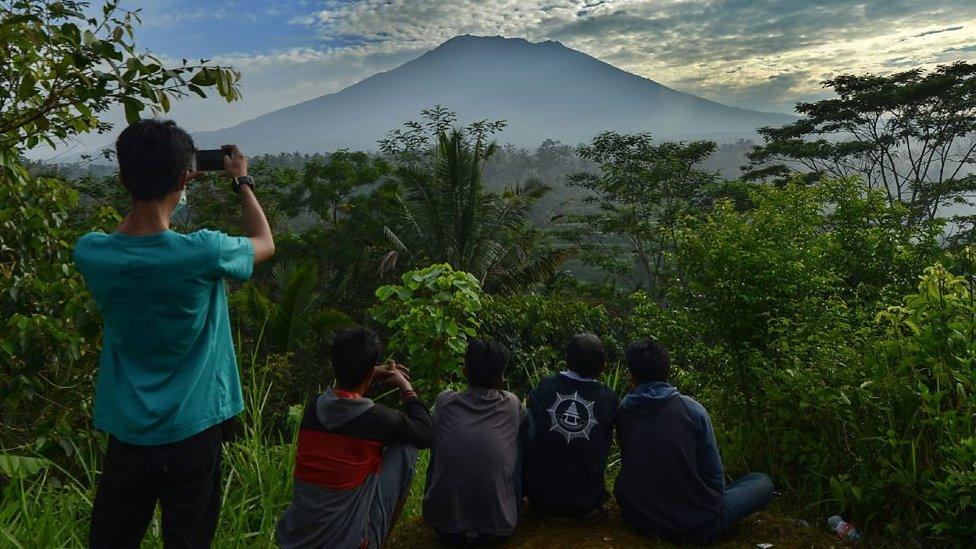
- Published25 September 2017
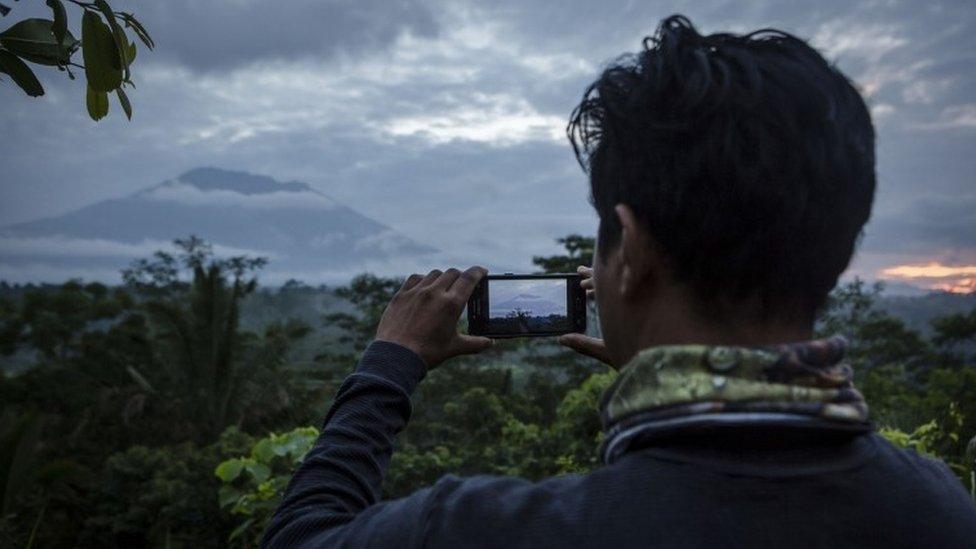
- Published23 September 2017
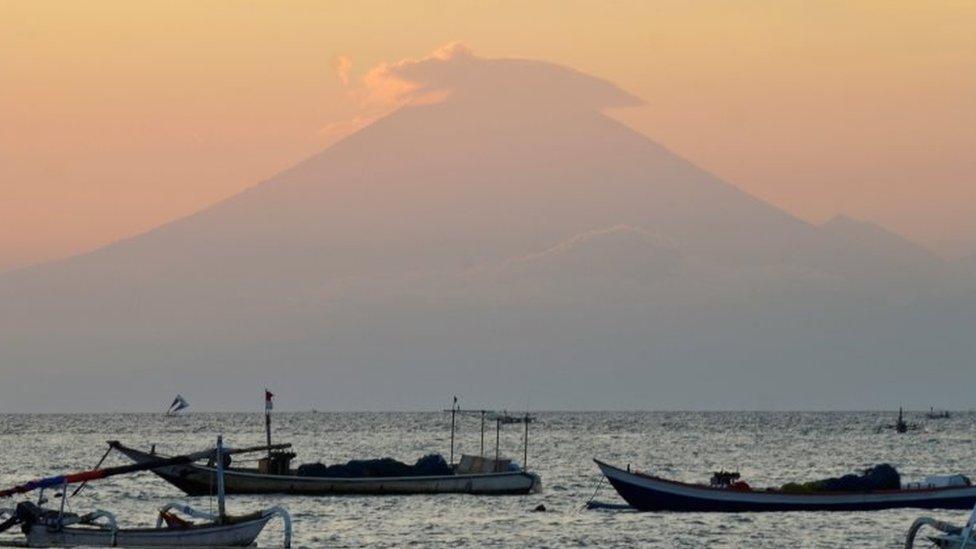
- Published25 October 2024
